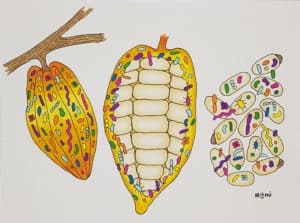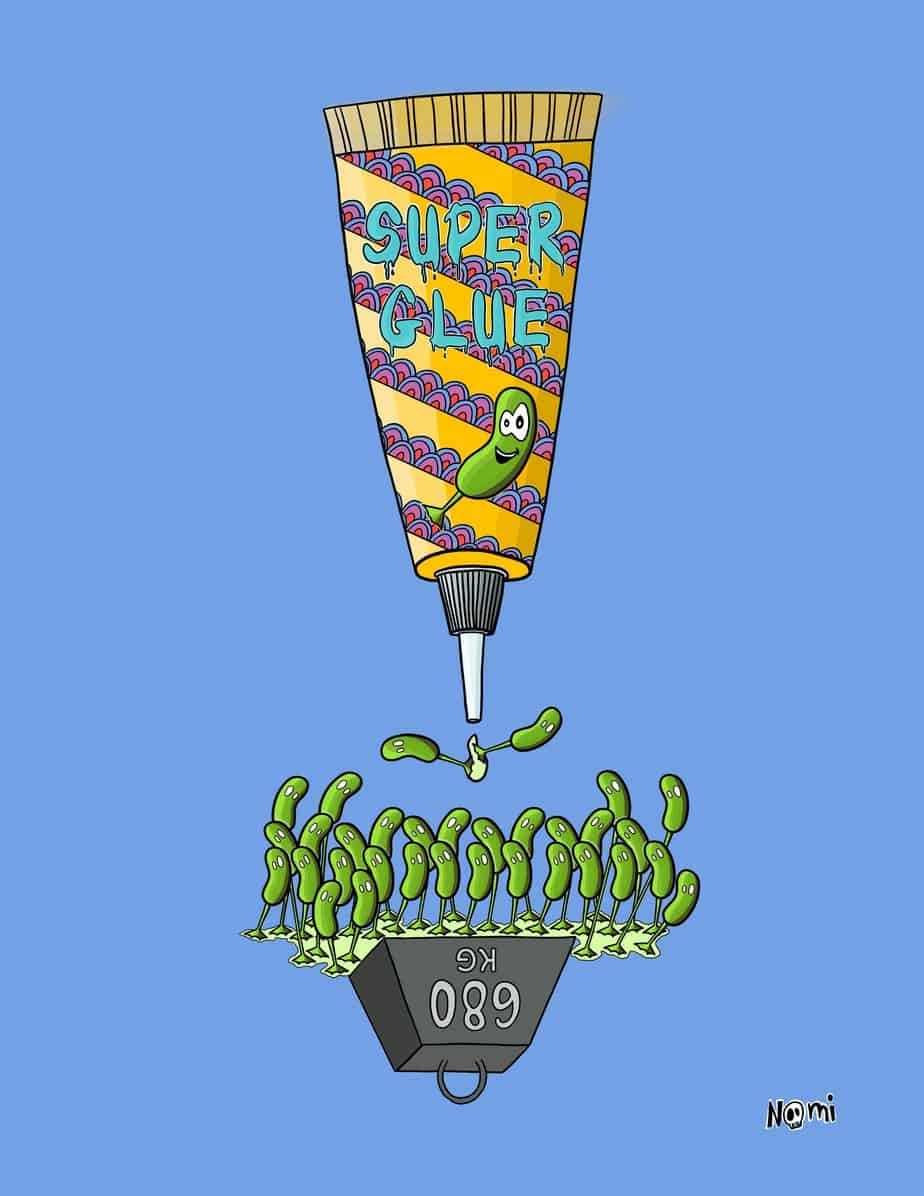Wherever you look, a microbe has likely been there before. Even in places where you don’t expect anything to grow, you’ll probably find some cool microbes that call this place their home.
And some of these microbes learned to adapt to these special – or extreme – conditions. They can’t even cope in normal environments.
Extreme conditions or extreme environments can be anything that we consider uninhabitable for us. This can be extremely high or low temperatures, extremely high or low pressure, radiation or toxicity.
Some of these microbes actually love the extremes. And these so-called extremophiles have special superpowers that help them survive in hostile places – like the bottom of the sea.
What are extremophiles
For example, so-called thermophiles live and grow at temperatures above 50 °C and hyperthermophiles even at temperatures above 80 °C. On the other hand, psychrophiles love temperatures below 10 °C. Plus, researchers keep finding interesting new species in the permafrost soils of the Arctic and Antarctic.
Some extremophiles also have superpowers to survive in extremely salty or acidic places like saline lakes or acid mine drainages. And other extremophile microbes grow in places with high metallic or toxic concentrations or high pressure like at the deep sea of the ocean.
These extreme environments put a lot of pressure on microbes, which means they need to adapt to these conditions or they won’t survive. Hence, in these extreme environments, microbes are mutating more often or exchanging more DNA with other species to learn to cope with these challenging conditions.
Here, we will look at microbes and extremophiles that live and grow in the deep sea. In this dark place, microbial communities have developed fascinating mechanisms to adapt. And from here, they can also impact our global climate.
Extremophiles living in the deep sea
Imagine the bottom of the sea about 30 km underwater: It is dark since sunlight cannot shine this far. It is 2 – 3 °C cold while close to hydrothermal vents, it can be up to 400 °C all of a sudden. And the pressure at the sea bottom is extremely high since all that water is extremely heavy pushing everything down.
And yet, the bottom of the sea is full of happily-living, growing microbes that enjoy their times together, feeding each other and stabilising our ecology. These microbes can swim around in the open sea. Most of them attach to dirt or sediment particles on which they form biofilms.
As you can imagine, this environment doesn’t offer much food or energy. So, it is incredibly important that microbes interact with each other here to exchange meals and information. That’s why many microbes in the deep sea feed each other with one microbe producing a special substrate that another microbe likes to eat.
These microbial food webs are very important for our global nutrient cycles as deep-sea microbes sequester atmospheric gasses, like CO2, and degrade contaminants and pollutants. For example, thermophilic bacteria like Desulfovulcanus ferrireducens and Oceanithermus profundus live close to hydrothermal vents which is why they grow best at about 65 °C. These extremophiles get their energy from hydrogen gas and organic acids that swim in the ocean.

Also, during oil spillages in the ocean over recent years, researchers found many bacteria and fungi that can eat and degrade oil or petroleum. Hence, their need for food cleans our oceans of these harmful components.
How extremophiles adapt to the deep sea
The deeper you are in the ocean, the less oxygen is available for microbes to breathe. Hence, microbes had to become creative about where to get their energy from. For example, Desulfovulcanus ferrireducens mainly uses iron components for respiration and growth while Oceanithermus profundus prefers nitrogen gas. All over the oceans, there are SO MANY microbes eating these iron components and nitrogen gas. Hence, all their metabolic activities impact the iron and nitrogen cycles of the whole planet.
But microbes and bacteria in the deep sea did not only have to adapt their meals to these conditions. Deep-sea extremophiles also had to develop mechanisms to withstand the pressure and the cold of this hostile place.
At very low temperatures, proteins often get out of shape so that they lose their functions. This can mess up the whole bacterial cell, which is why psychrophilic bacteria have so-called chaperones that constantly check the bacterium for proteins that are out of shape. These chaperones then help the protein get back into normal shape and thus to its normal functioning state.
Extremophile bacteria have different membranes
Another way to adapt to hot and cold temperatures is for bacteria to change their membranes. As you might know from experience, fat gets solid when it’s cold and fluid when it’s hot. And since bacterial membranes are mainly made out of lipids and fats, thermophilic and psychrophilic bacteria need to make sure their membranes can cope with the extreme temperatures.
To prevent membranes from becoming too fluid and leaky at high temperatures, thermophilic microbes solidify their membranes. On the contrary, psychrophilic bacteria like Psychromonas and Marinomonas need to make sure that their membranes stay flexible at cold temperatures.

Luckily, this special cold-adapted membrane also helps bacteria withstand the high pressure in the deep sea. And to counteract the pressure inside the cell, piezophile bacteria produce a lot of stuff and basically crowd their cells with proteins. This aims to keep the cell pressure inside high against the high pressure from the outside.
However, investigating such high pressure is extremely difficult in the lab. That’s why researchers still don’t know much about the pressure adaption of extremophiles in the deep sea.
What we can learn from extremophiles in the deep sea
Even though we still don’t know much about the fascinating microbial life underwater, researchers are optimistic that they will find lots of helpful microbes. Whether adapted to the cold or to the heat, deep-sea microbes have incredible mechanisms to grow at extreme temperatures.
This means they contain proteins that function perfectly on either side of the temperature spectrum. So, researchers hope that we could use that knowledge to design tailor-made proteins for our daily lives. We could for example use them in households or in biotechnology applications, for example, to improve cleaning efficiency or reduce energy input.
Another important aspect is to explore how microbes in the deep sea affect our global climate. With climate change, our oceans are getting warmer and thus they contain less oxygen. This means that also microbes are likely adapting to these changes which in turn influences the global climate.
Hence, understanding how microbes cope with the conditions in the deep sea helps us comprehend the full impact of climate change. This might then give us an idea about how to prevent more damage to our beautiful planet. With the help of microbes.











